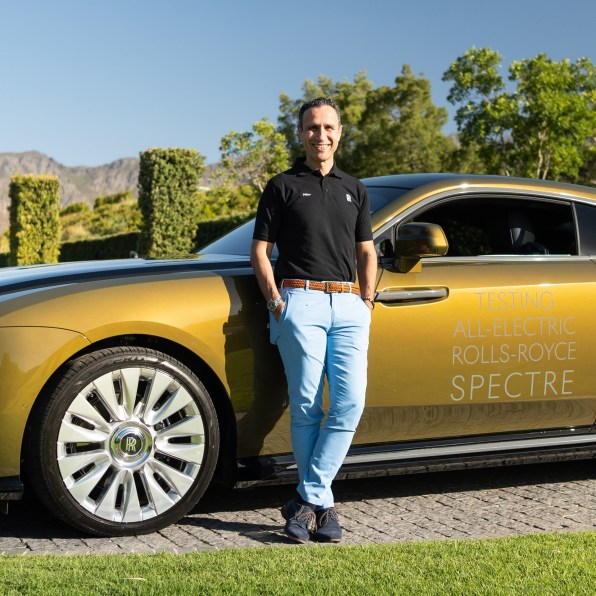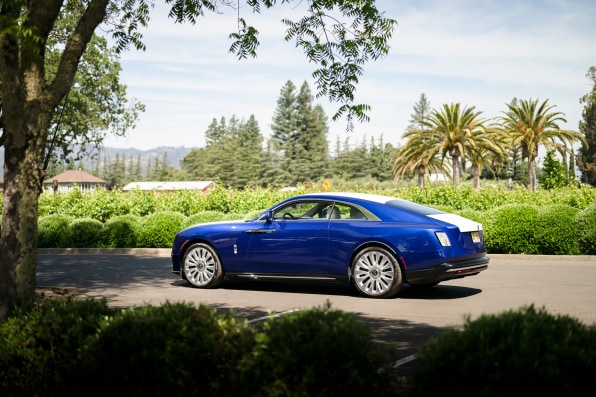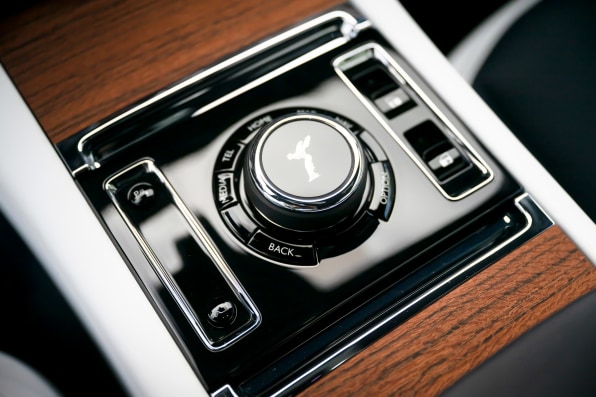- | 9:00 am
How Rolls-Royce is staying true to its roots while driving toward an EV-only future
Ditching internal combustion is a natural next step for this supercentenarian.

Honoring legacy is key for historic luxury brands. However, those style icons that fixate on the past tend to get left there, and with the rise of electrification, that’s increasingly true on the transportation front.
119-year-old Rolls-Royce is attempting to bridge the gap between history and technology by reminding consumers that its namesake founders were into EVs before they were cool. How far before? Charles Rolls bought a Columbia Electric Carriage back in 1898, an American-made machine that could do about 40 miles and 15 mph. He praised the car for being “perfectly noiseless and clean,” a quote that Rolls-Royce marketing now identifies as a “prophecy.”
However, Mr. Rolls quickly decried the lack of charging infrastructure, a still-common refrain 125 years later. Perhaps that’s why, when he and Sir Henry Royce partnered up a few years later to build cars, they didn’t make an EV. The pair instead stuck with loud and dirty internal combustion.

The intervening century saw no change on that front, even as Rolls-Royce swapped parentage many times over. Since 1998 it has been a part of the BMW AG family and current CEO Torsten Müller-Ötvös has finally made Charles Rolls’ so-called prophecy true.
“I think that was also always on my mind, knowing that the original prophecy about electrification came from Charles Rolls. It would have been odd not to be the first in the luxury segment,” Müller-Ötvös tells Fast Company.
While other premium brands like Mercedes-Benz and indeed BMW already boast plenty of electric offerings at dealerships, Rolls-Royce has indeed beaten other luxury marques like Bentley to the punch with the release of its first EV, Spectre.
Spectre is a car of striking proportions, with a footprint roughly matching that of a Cadillac Escalade despite having just two doors and seating for four. It offers traditionally stately Rolls looks and driving style but draws its power from a new all-electric powertrain. It’ll do somewhere north of 250 miles on a charge with a top speed of 155 mph.
That’s about 10 times faster than Charles Rolls’ 1898 machine.

While brands like Mercedes-Benz are using this EV transition period as an opportunity to completely reboot the look and feel of their cars, Müller-Ötvös says that was not the goal with Spectre.
“The one lesson you will learn from our clients is that you should never compromise in a Rolls-Royce. And it needs to be a Rolls-Royce in everything you smell, feel. Blindfolded, you need to understand it’s a Rolls-Royce,” he says.
That familiarity didn’t come easy. Mihiar Ayoubi, Rolls-Royce director of engineering, says that his team had to effectively reverse engineer the driving feel of a traditional Roller then re-create it literally from the wheels up.
Unnatural and, more importantly, uncomfortable.
The Spectre instead starts off gently, smoothly, as you would expect from a Rolls-Royce. But, stay on the throttle and the torque is strong enough to accelerate the massive car to 60 mph in just 4.4 seconds.

On-road testing took two years and 1.5 million miles, but there was a further two years of simulated testing even before that.
The Spectre is the first wave of an all-out electrification offensive that, according to Müller-Ötvös, is a $2.5-billion investment for researching new vehicles and creating the facilities to build them. “It’s big money,” he says, “but rightly and well-invested.”
Nothing about Rolls-Royce is inexpensive. The Spectre starts at $420,000, but most owners are estimated to spend upwards of $550,000 after options, putting it more or less on par with the average spend on other Rolls-Royce models like the Phantom or Ghost sedans.

While Rolls-Royce does not publish profit margins, estimates run as high as 30 percent, which would put it ahead of even Ferrari in the premium profit stakes.
High margins are key given the low volumes here. Rolls-Royce sold just over 6,000 cars last year, compared to 2.4 million for parent BMW in the same period. And, while many manufacturers are losing money on their initial EV efforts just to get a foot in the door, Müller-Ötvös says that is not the case with Spectre.
“We would have never compromised” on profits, he says, adding that all of the company’s cars are built on the same assembly line: “And it would not be good to have one of your fellow models that isn’t delivering on contribution margin as the others do.”
Müller-Ötvös declined to give a formal count for Spectre preorders, saying only that the number is “mind-boggling.” He did, however, say that 40 percent of those who preordered one of the electric coupes are new to Rolls-Royce. That’s double the figure Rolls achieved with its previous new model, the Cullinan SUV, which starts at around $375,000.
Not only are more new clients coming to the brand, Müller-Ötvös says that those clients are younger, too. When he took over in 2010, the average age of a customer was 56. Today, it’s 43.

That’s hardly Gen Z, but does mean that Rolls-Royce is knocking on the millennial door, a sign that the century-plus appeal of ultra-posh motoring isn’t lost on newer generations.
This generation, though, will be the last to buy internal combustion. “Our strategy is clear,” Müller-Ötvös says. “We go fully electric by the end of 2030, all products are electrified, and the last 12-cylinder is the end of 2030.” After that, it’s all batteries all the way.
And what about those charging stations that stymied Charles Rolls’ electric dreams 120 years ago? As it turns out, for Rolls buyers, chargers already exist at the most convenient place possible: home.
The average Rolls-Royce buyer has several cars and, Müller-Ötvös says, EVs like a Porsche Taycan or Tesla’s Model S are common among their ranks. “Many of our clients already have charging,” he says. “You come home, you plug it in. Next morning, full. Super convenient.”
Plus, no having to mingle with the pesky proletariat down at the pumps, either.






































